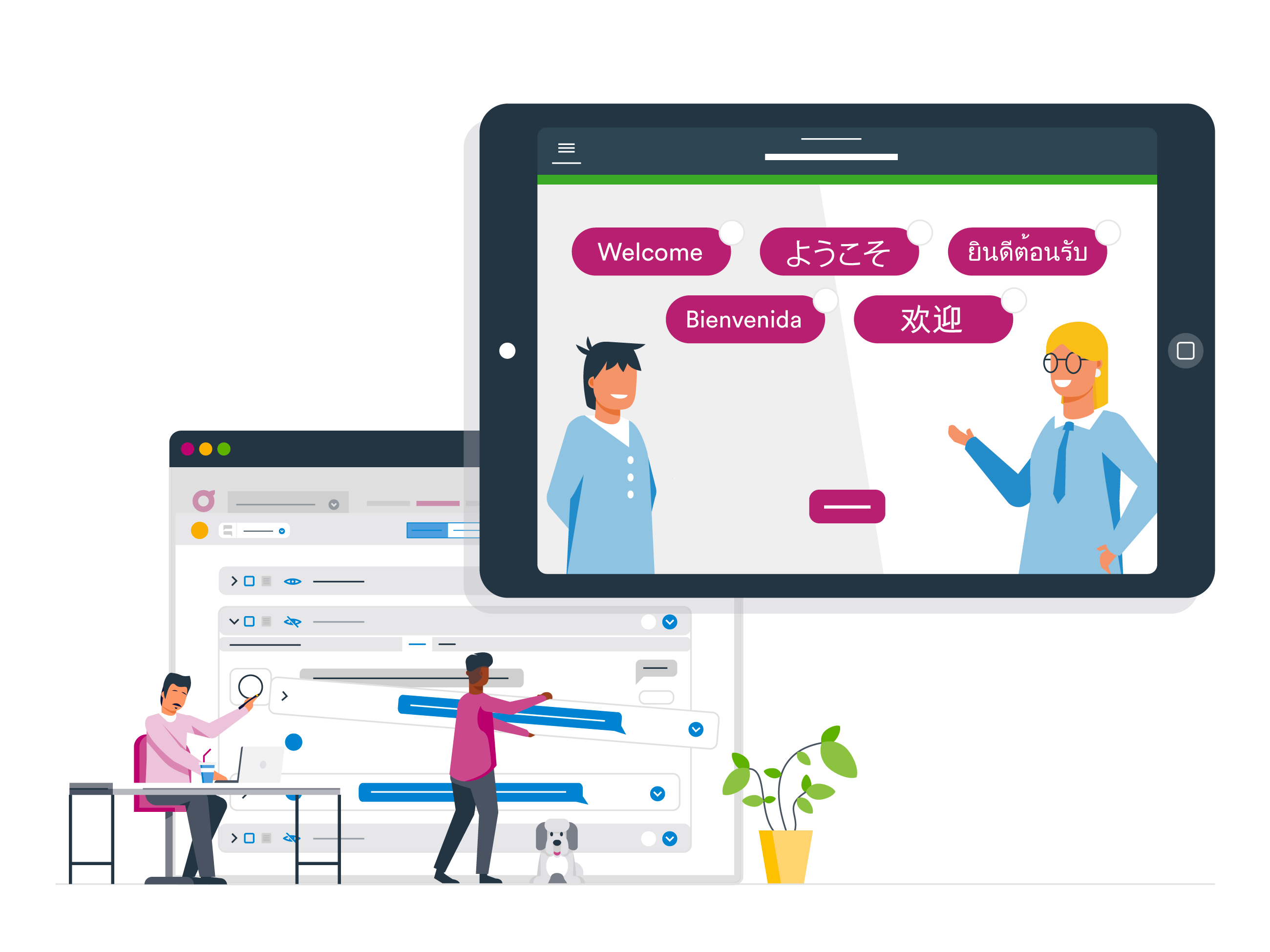Language barriers shouldn't stop you from delivering high-quality digital learning experiences to learners all over the world. Making your learning multilingual should be a great opportunity, not a restriction!
In an increasingly connected world, companies span multiple countries with employees speaking a variety of languages. With the help of eLearning, education, both academic and professional, is become more accessible all over the world.Creating multilingual learning that is genuinely effective and learner-centred requires more than just translation, it needs localisation. While translation is merely translating words into another language, localisation takes into account things like cultural differences and adapts both written and visual content.
Here are 5 things to consider to help you build multilingual eLearning with fluency.
1. Localisation is not an afterthought
The process of creating effective multilingual eLearning should begin long before it's time to translate. You need to scope and plan for additional resources and phases that are unique to building multilingual courses.
Begin by considering the elements that need to be translated and localised. This often includes:
-
Written content
-
UX elements (e.g. navigation buttons)
-
Audio and video
-
Graphics
Identify the languages into which you'll be translating. Will you be using special characters? Does the course need to be developed in a right-to-left language like Arabic?
When planning your project timeline, allow time for extra review rounds by a native-speaking reviewer. It is crucial to have a reviewer who is a native speaker and understands the cultural sensitivities of the country for which you're building.
2. Use transferrable language
The written content of the English course should be planned well in advance to ensure that it's transferrable to the countries it's going to be delivered in. This includes the style of writing, the language used, and the subject matter.
-
Avoid using slang and idioms.
-
Avoid referring to places and people that won't translate well.
-
Make sure your scenarios and examples are culturally sensitive and relevant.
3. Be mindful of media
Graphics, videos and audio are powerful mediums that can help to simplify complex information, add visual interest and engage learners.
-
The easiest way to translate video and audio is to provide translated subtitles and transcripts.
-
Use culturally neutral images or localise to the countries where the learning will be delivered.
-
Avoid including text in videos and graphics. Otherwise you will need to extract and translate text, which means additional time and cost.
4. Symbols and icons
Icons are a simple and effective way to get your message across. They add an interesting visual element, can be used to provide concise information without using text, and even improve memory retention of a fact or concept.
They also don't need to be translated, but some do need to be localised. Some icons and symbols might have a different meaning or be nonexistent in another culture. If you give someone a thumbs up in Greece, Russia or West Africa, you may as well be sticking them the middle finger!
Colours also have different meanings in different cultures. In China, red symbolises good luck and celebration while in Western countries it represents passion, love, and sometimes danger.
5. Decide if you want a single multilingual module or multiple localised modules
Now that you understand what needs to be considered when translating and localising eLearning, you should consider whether you will be making a single, culturally-neutral multilingual module, or a separate module for each language.
This will depend on the needs of your business and your learners, and the subject of your training. Some content is easier to neutralise so that it is compatible with multiple countries, like technical training, for example.
Others will benefit from being highly localised, in this case you may choose to have a separate localised module for each language.
6. Choose the right authoring tool
You can do all of the planning, scoping and localisation you like. Still, if you don't have a platform that seamlessly supports multilingual eLearning, you will be compromising the experience for all of your learners.
If you've decided to create a multilingual version of your module, does your authoring tool genuinely support multilingual, or do you have to create a different version for each language? This can cause problems later on when loading into the LMS and with reporting.
The user interface (UI) should be intuitive, regardless of the language. Choosing the right tool means you'll waste less time, effort and money on translations and additional work on UI and design.
For example, when translating from English to German, text may expand as much as up to 35%. This won't be a problem if your authoring tool can easily adapt to text expansion or contraction.
Did you know that some fonts only work for certain languages? If a language is not catered to by a specific font, you might have seen the little box where a special character should be. If you're in the market for an authoring tool, make sure it supports multilingual fonts. If you're using Guroo Pro, we've got custom and google fonts built into the theme editor.
Want to learn more?
If you want to seamlessly build multilingual learning that delivers the same experience to all learners, Guroo Pro might be for you.
Explore how our agile platform will help to create engaging eLearning, regardless of their preferred language with our 14 day free trial.

.png)

